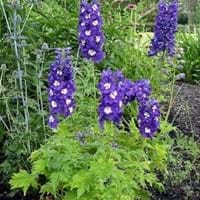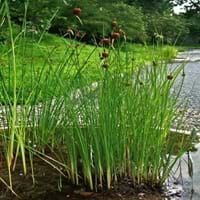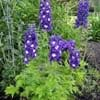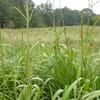Life Span
Perennial
Perennial
Type
Flowering Plants, Ornamental Plants, Shrubs
Aquatics
Origin
Africa
Eastern Europe, Western Asia
Types
Not Available
Common Cattail, Southern Cattail, Dwarf Bulrush
Number of Varieties
Not Available
Habitat
gardens, meadows
Lake margins, Ponds, Swamps
USDA Hardiness Zone
Not Available
3-11
AHS Heat Zone
12 - 6
12-1
Sunset Zone
Not Available
21,22
Habit
Upright/Erect
Upright/Erect
Minimum Width
Not Available
Flower Color
Blue, Indigo, Lavender, Light Purple
Yellow, Green, Brown, Chocolate
Flower Color Modifier
Bicolor
Not Available
Fruit Color
Not Available
Light brown, Light Red
Leaf Color in Spring
Green
Green, Dark Green
Leaf Color in Summer
Light Green
Green, Dark Green
Leaf Color in Fall
Green, Yellow green
Green, Dark Green
Leaf Color in Winter
Green, Light Yellow, Tan
Brown
Leaf Shape
Palmate and toothed
Long linear and narrow
Plant Season
Spring, Summer, Fall, Winter
Summer, Fall, Winter
Sunlight
Full Sun, Partial Sun
Full Sun, Partial Sun
Type of Soil
Clay, Loam, Sand
Clay, Loam, Sand
The pH of Soil
Acidic, Neutral, Alkaline
Acidic, Neutral
Soil Drainage
Well drained
Poorly Drained
Bloom Time
Not Available
Summer, Late Summer, Early Fall
Tolerances
Heat And Humidity
Wet Site
Where to Plant?
Ground, Pot
Container, In Water
How to Plant?
Seedlings, Stem Cutting
Runners
Plant Maintenance
Medium
Low
Watering Requirements
It cannot sustain wet-feet, Keep ground moist, Requires regular watering, Water more in summer
Plant grows in water
In Summer
Lots of watering
Aquatic Plant
In Spring
Moderate
Aquatic Plant
In Winter
Average Water
Aquatic Plant
Soil pH
Acidic, Neutral, Alkaline
Acidic, Neutral
Soil Type
Clay, Loam, Sand
Clay, Loam, Sand
Soil Drainage Capacity
Well drained
Poorly Drained
Sun Exposure
Full Sun, Partial Sun
Full Sun, Partial Sun
Pruning
Cut away fading foliage, Do not prune during shooting season, Remove damaged leaves, Remove deadheads
Prune in early spring, Remove damaged leaves, Remove dead branches, Remove dead leaves
Fertilizers
High-phosphorous fertilizers used, Organic Flower Fertilizer
Nitrogen, Phosphate
Pests and Diseases
Bacterial leaf spot, fungus, Mealybugs
Red blotch
Plant Tolerance
Heat And Humidity
Drought
Flower Petal Number
Single
Single
Foliage Texture
Fine
Medium
Foliage Sheen
Matte
Matte
Attracts
Butterflies
Birds, Flying insects
Allergy
Severe allergen, Skin irritation, Skin rash, Throat itching, Vomiting
Not Available
Aesthetic Uses
Beautification, Borders, Showy Purposes, Used for decorating walls, fences, gates, hedges, etc.
Beautification, Showy Purposes, Water gardening
Beauty Benefits
Not Available
Not Available
Environmental Uses
Air purification
Food for animals, Food for birds, Food for insects, Nesting sites for birds
Medicinal Uses
Not Available
Nutrients
Part of Plant Used
Flowers
Leaves
Other Uses
Used in making blue ink
Decoration Purposes, Showy Purposes, Used as Ornamental plant
Used As Indoor Plant
No
Yes
Used As Outdoor Plant
Yes
Yes
Garden Design
Edging, Feature Plant
Bog Garden, Container, Water Gardens
Botanical Name
Delphinium elatum
TYPHA minima
Common Name
Alpine delphinium, Delphium, Candle larkspur, Siberian larkspur, Musk Larkspur,
Dwarf Cattail
In Hindi
अल्पाइन Delphinium
बौना कैटेल
In German
Alpine Delphinium
Dwarf Rohrkolben
In French
Alpine Delphinium
Cattail nain
In Spanish
Alpine Delphinium
Espadaña enano
In Greek
Alpine Δελφίνιο
Νάνος Cattail
In Portuguese
Alpine Delphinium
Tifa Dwarf
In Polish
Alpine Delphinium
Dwarf Ożypałka
In Latin
Alpine Delphinium
Pumilio Cattail
Phylum
Tracheophyta
Tracheophyta
Class
Magnoliopsida
Liliopsida
Order
Ranunculales
Poales
Family
Ranunculaceae
Typhaceae
Clade
Angiosperms, Eudicots
Angiosperms, Commelinids, Monocots
Tribe
Not Available
Not Available
Subfamily
Not Available
Not Available
Number of Species
Not Available
Importance of Alpine Delphinium and Dwarf Cattail
Want to have the most appropriate plant for your garden? You might want to know the importance of Alpine Delphinium and Dwarf Cattail. Basically, these two plants vary in many aspects. Compare Alpine Delphinium and Dwarf Cattail as they differ in many characteristics such as their life, care, benefits, facts, etc. Every gardener must at least have the slightest clue about the plants he wants to plant in his garden. Compare their benefits, which differ in many ways like facts and uses. The medicinal use of Alpine Delphinium is Not Available whereas of Dwarf Cattail is Nutrients. Alpine Delphinium has beauty benefits as follows: Not Available while Dwarf Cattail has beauty benefits as follows: Not Available.
Compare Facts of Alpine Delphinium vs Dwarf Cattail
How to choose the best garden plant for your garden depending upon its facts? Here garden plant comparison will help you to solve this query. Compare the facts of Alpine Delphinium vs Dwarf Cattail and know which one to choose. As garden plants have benefits and other uses, allergy is also a major drawback of plants for some people. Allergic reactions of Alpine Delphinium are Severe allergen, Skin irritation, Skin rash, Throat itching and Vomiting whereas of Dwarf Cattail have Not Available respectively. Having a fruit bearing plant in your garden can be a plus point of your garden. Alpine Delphinium has no showy fruits and Dwarf Cattail has no showy fruits. Also Alpine Delphinium is flowering and Dwarf Cattail is not flowering . You can compare Alpine Delphinium and Dwarf Cattail facts and facts of other plants too.





